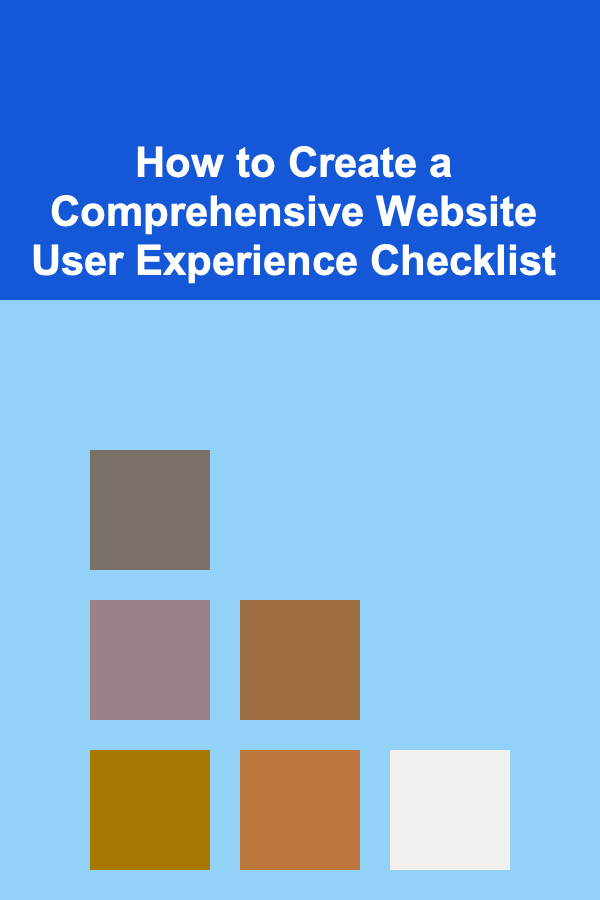
How to Create a Detailed App Development Budget
ebook include PDF & Audio bundle (Micro Guide)
$12.99$11.99
Limited Time Offer! Order within the next:
Not available at this time

Creating a detailed app development budget is one of the most crucial steps in the development process. Whether you are a startup looking to build your first mobile app or a company planning a complex web-based solution, understanding the financial aspects of app development is essential to ensure that the project stays on track, both in terms of timeline and costs. A well-constructed budget can prevent unexpected financial hurdles and allow for a smoother development process. It can also help you allocate resources effectively and ensure that you get the best value for your investment.
In this guide, we will explore the key components of an app development budget, provide a step-by-step breakdown of how to create a realistic budget, and discuss strategies for managing costs throughout the development lifecycle.
Understanding the Key Factors in App Development Costs
Before diving into the specifics of budget creation, it's essential to understand the factors that influence the overall cost of app development. These factors will directly impact your budget and help you anticipate potential expenses.
Key Factors Affecting App Development Costs:
- App Type: The complexity of your app (e.g., simple app, e-commerce platform, social network, or enterprise-level solution) can significantly impact the cost. Simple apps typically cost less to develop, while complex apps with advanced features can be much more expensive.
- Platforms: Developing an app for iOS, Android, or both can have different pricing implications. Developing for both platforms typically doubles the development effort and costs unless you use cross-platform frameworks like Flutter or React Native.
- Design: A sleek and user-friendly design requires more investment, especially if you're looking for custom graphics, animations, and high-level user experience (UX) design.
- Features and Functionality: The more features you want, the higher the development cost. Features such as payment processing, real-time notifications, GPS tracking, social media integration, or multi-language support will increase the cost.
- Location of Developers: The geographical location of your development team plays a significant role in determining the cost. Developers in countries with high living costs (like the United States or Western Europe) generally charge higher rates than developers in regions with lower living costs (such as India or Eastern Europe).
- Timeframe: A tight deadline can increase costs due to the need for overtime or additional resources. Rushed timelines may also compromise the quality of the app, leading to more issues down the line.
Step-by-Step Guide to Creating an App Development Budget
Now that we have a general understanding of the factors that influence costs, let's break down the process of creating a detailed app development budget.
2.1. Define the Project Scope
The first step in creating a budget is defining the project scope. This means identifying the app's purpose, its target audience, and the key features that it will offer. The more specific you are about your app's requirements, the easier it will be to estimate the development costs.
Key Components to Define:
- App Features: List all the features you want the app to include (e.g., login functionality, user profiles, chat, payment systems, push notifications, etc.).
- User Flow: Map out the user journey from start to finish. How will users navigate through the app? What are the key interactions?
- Design Specifications: Outline the design elements you want for your app. Will you need custom illustrations, animations, or a unique user interface (UI) design?
2.2. Break Down the Costs by Phases
App development typically goes through several phases, and each phase has its own associated costs. Breaking your budget down into these phases will give you a clearer idea of where the money is going and help you manage your funds more effectively.
Typical App Development Phases:
-
Discovery Phase (Planning):
- Market research
- Requirements gathering
- Competitive analysis
- Business analysis
-
Design Phase:
- UI/UX design
- Wireframes and mockups
- Prototyping
-
Development Phase:
- Front-end and back-end development
- API integration
- Third-party integrations
-
Testing Phase:
- Quality assurance (QA) testing
- Bug fixing
- Performance testing
-
Launch Phase:
- App store submission (iOS and Android)
- Marketing and promotion
-
Maintenance and Updates:
- Regular bug fixes
- Feature updates
- OS compatibility updates
2.3. Estimate the Development Team Costs
Once you have a clear understanding of the project scope and phases, the next step is estimating the development team costs. The cost of the development team is typically the largest portion of the budget, and this will vary depending on the size of the team and their location.
Key Team Members:
- Project Manager: Responsible for overseeing the entire project and ensuring everything stays on track.
- Developers: This includes front-end and back-end developers, depending on whether you are building a mobile app, a web app, or both.
- UI/UX Designers: Designers who work on the user interface and user experience aspects of the app.
- Quality Assurance (QA) Testers: Professionals who test the app for bugs and ensure that the final product meets the specifications.
Estimating Development Costs:
- Hourly Rates: Most developers charge by the hour. Depending on the location, hourly rates can range from $25 per hour to $200+ per hour.
- Fixed Price Projects: For well-defined projects, you might negotiate a fixed price. This is common for smaller apps or MVPs (Minimum Viable Products).
2.4. Account for Design Costs
Design is another crucial aspect of app development that requires careful budgeting. A visually appealing and intuitive app design enhances user engagement and experience. The cost of design typically includes the following:
- Wireframes and Mockups: Basic sketches of the app's user interface (UI).
- High-Fidelity Designs: Full-color designs with interactive elements.
- Prototypes: Interactive versions of the app used for user testing.
Design costs can range from $2,000 to $10,000+ depending on the complexity and expertise required.
2.5. Consider Testing and QA Costs
Testing is essential to ensure that your app works properly before launch. QA costs should be included in your budget to cover:
- Manual Testing: Testers manually check the app for bugs and issues.
- Automated Testing: Some apps require automated testing to check for performance, security, and compatibility.
Testing can cost anywhere from $1,000 to $5,000 or more, depending on the complexity of the app and the extent of the testing required.
2.6. Factor in Launch and Marketing Costs
Once your app is developed and tested, it's time to launch. However, launch costs extend beyond just submitting your app to the app stores. You'll also need to budget for:
- App Store Fees: Apple charges a $99 annual fee for the App Store, while Google charges a one-time $25 fee for the Play Store.
- Marketing and Promotion: Budget for online ads, influencer marketing, or public relations efforts to ensure that users discover your app.
Launch and marketing costs can vary widely, but it's wise to allocate at least 10-20% of your overall budget for this phase.
2.7. Ongoing Maintenance and Updates
After the app is launched, ongoing maintenance is necessary to keep it functioning smoothly. This includes bug fixes, security updates, and adding new features.
Maintenance costs can run 15-20% of the initial development costs per year.
Managing Your App Development Budget
To ensure that your app development stays on track financially, it's essential to monitor the budget throughout the process. Here are some tips for managing your budget effectively:
- Set Clear Milestones: Break the project into phases with clearly defined milestones. This will help you monitor progress and adjust the budget as needed.
- Track Time and Expenses: Use project management tools to track time spent on tasks and expenses incurred during development.
- Prepare for Unexpected Costs: Allocate a buffer for unexpected expenses, such as additional features, changes in scope, or unanticipated delays.
- Negotiate Contracts: Be sure to set clear expectations and negotiate contracts with your development team to avoid surprises later on.
Conclusion
Creating a detailed app development budget is an essential step in the app development process. By carefully considering the project scope, breaking down costs by phase, and estimating the costs for developers, designers, testing, and launch, you can create a realistic budget that keeps your project on track. Additionally, by monitoring and adjusting the budget as needed, you can ensure that you get the best value for your investment while delivering a high-quality app to your users.
With the right planning and foresight, your app development budget will serve as a foundation for the success of your app.

How to Budget for a Home Renovation Without Breaking the Bank
Read More
How to Cook Healthy Air Fryer Recipes
Read More
How to Create a Comprehensive Website User Experience Checklist
Read More
How to Make Money Online as a Home Organization Consultant: 10 Actionable Ideas
Read More
How To Practice Healthy Compromise
Read More
Understanding Wine Regions of the USA: A Deep Dive into Napa and Sonoma
Read MoreOther Products

How to Budget for a Home Renovation Without Breaking the Bank
Read More
How to Cook Healthy Air Fryer Recipes
Read More
How to Create a Comprehensive Website User Experience Checklist
Read More
How to Make Money Online as a Home Organization Consultant: 10 Actionable Ideas
Read More
How To Practice Healthy Compromise
Read More